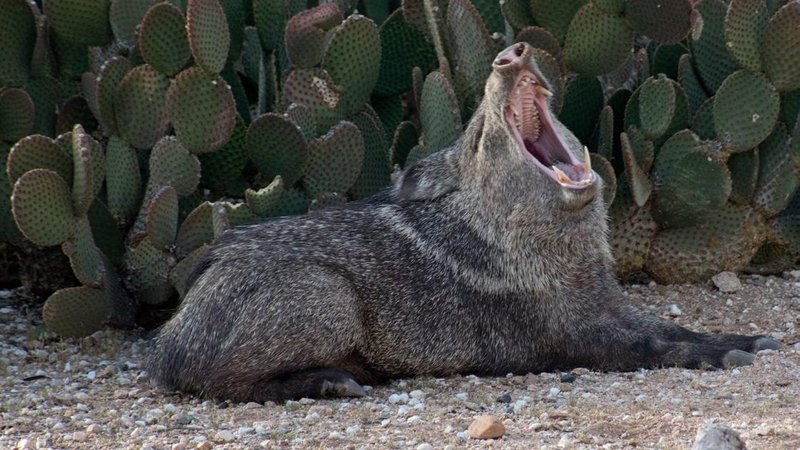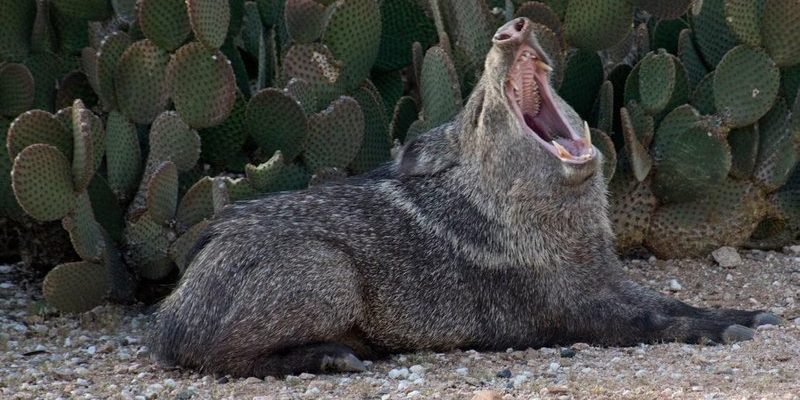
Javelinas, also known as collared peccaries, are more than just cute, snuffling animals that roam the desert. They’re key players in maintaining the health of their environment. Think of them as the unsung heroes of the ecosystem. Just as bees pollinate flowers and keep our gardens blooming, javelinas help spread seeds and control plant growth, creating a balance in their habitats. So, why are they so crucial? Let’s dive in.
The Basics of Javelinas
To appreciate the javelina’s role, it helps to know a bit about them. Javelinas are medium-sized animals that typically weigh between 40 to 60 pounds and reach about 3 feet in length. They sport a coarse coat of grayish-brown fur with a distinctive collar-like band around their necks. This unique feature gives them their name, “collared peccary.”
These animals are social creatures, often found in groups, which helps them stay safe from predators. Javelinas primarily feed on plants, fruits, and roots, making them herbivores. Here’s the thing: their diet isn’t just for their survival. With their rooting behavior, they disturb the soil, helping to aerate it. This activity encourages new plant growth, meaning they’re indirectly fostering their own food sources!
Seed Dispersal: Nature’s Postman
One of the most important roles javelinas play in their ecosystem is seed dispersal. They munch on various fruits and plants, and as they roam, they help spread these seeds across the landscape. You might picture them as nature’s little mail carriers, ensuring that plant species can grow in new areas.
When javelinas eat fruit, they often don’t fully digest seeds. Instead, these seeds pass through their system and are excreted in different locations. This process not only helps plants reproduce but also supports biodiversity. More diverse plant life means a healthier ecosystem, providing food and shelter for countless other species.
Maintaining Plant Communities
Javelinas also help keep plant communities in check. By eating certain plants and roots, they prevent any single species from dominating the landscape. This aspect of their behavior is crucial because it promotes a balanced ecosystem. Think of it like a big, leafy friendship group: if one plant type starts to take over, it can crowd out others that need space and light to thrive.
When javelinas graze, they create open areas in the vegetation. These clearings allow younger plants a chance to grow and flourish. It’s a simple but effective way of keeping the ecosystem dynamic and vibrant.
Influence on Other Wildlife
The presence of javelinas influences many other animal species in their habitats. By foraging for food and disturbing the ground, they create opportunities for smaller creatures to thrive. For instance, other mammals, birds, and insects benefit from the disturbed soil habitats, which provide nesting sites and foraging grounds.
Additionally, javelinas are a food source for larger predators like coyotes and mountain lions. This relationship illustrates how interconnected all species are within the ecosystem. Without javelinas, the balance could tip; fewer herbivores might mean too much vegetation, which could disrupt the overall habitat.
Javelinas and Their Human Neighbors
As urban areas expand into wildlife territories, javelinas often find themselves interacting with human communities. While these encounters can sometimes lead to issues—like raiding gardens or trash cans—it’s essential to remember that javelinas are just trying to survive. They’ve adapted well to nearby human habitats, showing how resilient they are.
Here’s the thing: it’s not just about managing wildlife. Educating communities about living harmoniously with javelinas can be a game-changer. Simple measures, like securing garbage and planting javelina-friendly landscaping, can peacefully coexist without intruding on each other’s space.
Conservation and Future Impact
As the climate changes and habitats are modified, the future of javelinas is uncertain. Conservation efforts play a vital role in ensuring these creatures continue their essential work within their ecosystems. Protecting their habitats can help maintain the delicate balance of the environments they thrive in.
It’s important to support initiatives that focus on both animal welfare and habitat preservation. By doing so, we contribute to a healthier ecosystem for javelinas and all the other wildlife that share their space.
In many ways, javelinas are the unsung heroes of their ecosystems. They contribute to seed dispersal, maintain plant communities, and support biodiversity. Understanding their role helps us appreciate the complex web of interactions in nature.
So next time you hear about javelinas, remember that they’re not just quirky desert dwellers; they’re crucial players in the health of their environment. By respecting and protecting these animals, we ensure the future of the ecosystems they help sustain. Let’s celebrate the javelina and all the incredible work they do, often without us even noticing!

